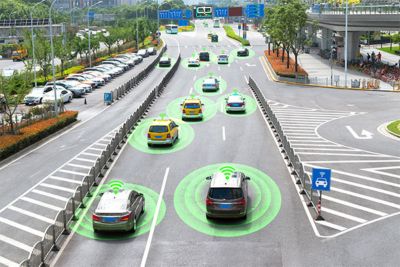-
United States -
United Kingdom -
India -
France -
Deutschland -
Italia -
日本 -
대한민국 -
中国 -
台灣
-
Ansys is committed to setting today's students up for success, by providing free simulation engineering software to students.
-
Ansys is committed to setting today's students up for success, by providing free simulation engineering software to students.
-
Ansys is committed to setting today's students up for success, by providing free simulation engineering software to students.
-
Contact Us -
Careers -
Students and Academic -
For United States and Canada
+1 844.462.6797
ANSYS BLOG
August 4, 2020
How SOTIF Is Raising the Bar on Automotive Safety
For years, automotive engineering teams have worked to comply with the industry standard ISO 26262, uncovering and addressing functional safety (FuSa) hazards, such as software bugs and hardware failures. This standard aims to ensure that complex electronics in today’s cars are reliable ― delivering consistent performance over time, with no critical system failures.
With the emergence of automated driving and autonomous vehicles comes an even greater safety engineering challenge. What if components ― such as sensors ― are working as designed, but their capabilities are falling short under real-world conditions?
SOTIF encompasses performance and environmental limitations of autonomous vehicle systems.
For example, a perception algorithm might recognize various types of pedestrians with a high degree of accuracy, but then unexpectedly misidentify a construction worker wearing a yellow reflective vest. Although the vest increases visibility for humans, it might confuse the perception system of an autonomous vehicle, resulting in catastrophic consequences.
SOTIF Standard Addresses Automotive Safety Performance
Can sensors identify objects correctly and trigger an appropriate response? Is the specified behavior appropriate in all potential operating conditions?
Now a new safety standard is on the way to address this challenge. ISO 21448 “Road Vehicles – Safety of the Intended Functionality” (SOTIF) examines whether a needed safety functionality is successfully delivered in the absence of a failure, such as performance limitations of sensors or systems, unexpected changes in the road environment, etc. It enables engineering teams to avoid situations where vehicles are working as designed, but are falling short under real-world scenarios.
The types of scenarios that must be solved to achieve ISO 21448 compliance are incredibly complex and can only be identified by bringing safety analysis and simulation together to replicate real-world conditions and predict results in advance.
While this standard is essential for verifying the safe performance of automated driving and autonomous vehicles, it now places a responsibility on engineering teams to navigate this new area of safety analysis quickly and efficiently. Where to begin?
A Collaborative, Integrated SOTIF Solution
Ansys medini analyze is the industry standard for analyzing different aspects of functional safety, defining technical solutions and demonstrating compliance. It now includes capabilities for ensuring SOTIF compliance. It is part of an Ansys toolset designed to meet the complex needs of autonomous vehicle design, bringing together modeling, simulation and analysis.
Teams can build performance into their designs from the earliest stages ― and verify that performance before vehicles hit the road by:
- Identifying and addressing limitations and triggering conditions that may lead to SOTIF hazards.
- Simultaneously meeting the demands of ISO 21448 and ISO 26262 standards in an integrated workflow.
- Facilitating the collaboration of diverse teams working to meet functional safety and SOTIF standards across embedded software, electronics, perception systems and other areas.
- Reducing development time, eliminating redundancies and accelerating time-to-market.












